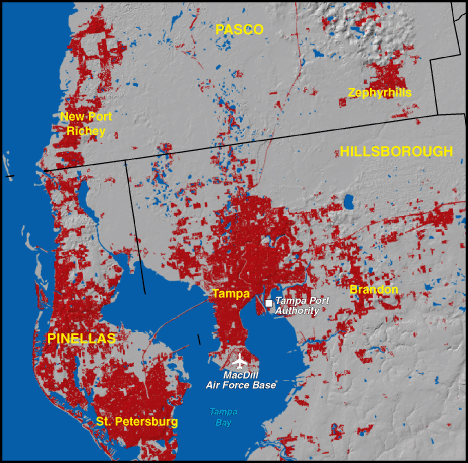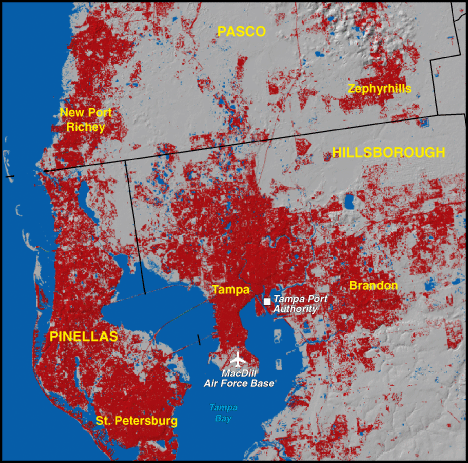Tampa-St. Petersburg, Florida 1973


|
1970 Population - 1,088,549
Includes Pasco, Pinellas, and Hillsborough Counties. NOTE: portions of the above listed counties may not be visible on the map Red areas shown as developed land 220,300 acres (344 square miles) |
Tampa Bay is one of the best natural harbors on the Gulf coast. Yet it remained relatively undeveloped until the 1880s, when Tampa became a railroad hub for Florida's western coast. Port facilities developed, from which locally mined phosphate was shipped and troops embarked for the Spanish-American War. Caribbean linkages were enhanced by the city's Cuban cigar manufacturing and banana imports. The Tampa Bay urban region was strengthened by defense spending during World War II and changing postwar demographics. Shipbuilding companies and military bases found a home in the city. |
Tampa-St. Petersburg, Florida 1992

|
1990 Population - 1,966,844
Includes Pasco, Pinellas, and Hillsborough Counties. NOTE: portions of the above listed counties may not be visible on the map Red areas shown as developed land 339,400 acres (530 square miles) |
Large numbers of retirees also arrived, especially in St. Petersburg, Pinellas, and Pasco Counties. The rapid urbanization of the Tampa Bay area has not been problem free. Ecologically, pollution, ship channel dredging, and wetland destruction have damaged the Bay. Boat-based residential areas created by dredging and infilling are examples of intense shore land alteration. The lack of coordinated regional planning, particularly between Tampa-St. Petersburg and Tampa-Hillsborough County, has strained public infrastructure. Tampa Bay area residents are cooperating to correct past problems and anticipate further growth. |